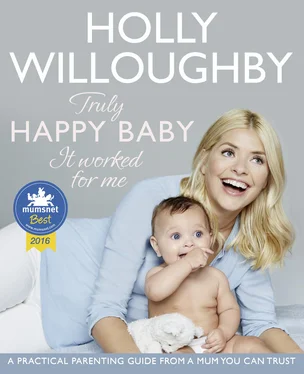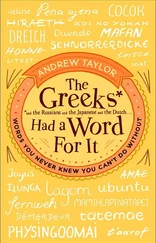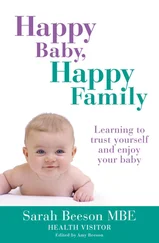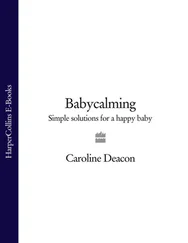5. Feed to your baby immediately.
Making up formula: the cheat’s way! …
However, I’m going to be honest with you, I didn’t do it this way. This is one of those alarm-bell moments, where you need to weigh up the official advice against my experience and make your own choice. Current guidelines say you should heat the water you mix with formula to 70˚ or above to minimise the chance of any nasty bacteria forming, so while below was my preferred option, it’s really up to you. If, like me, you just don’t have the time or the inclination to repeat formula preparation steps 1–5 several times a day, you might find this alternative way useful.
After consulting several midwives and medical professionals about how far to take official formula advice, here’s what I found out to help make life a little bit easier:
• Once sterilised, bottles will remain sterile for up to 24 hours as long as the lids are screwed on – whether you’ve left them empty or have put cooled boiled water in. So sterilise all your bottles for the next 24 hours in one hit, fill with the correct amount of water and pop the lids on.
• Pre-prepared bottles with only cooled boiled water in can be left at room temperature for 24 hours so you can add the formula just before you feed your baby, unless of course you give your baby warmed milk, in which case you’ll have to warm the bottle (see here).
• You also have the option of adding the formula to completely make up the bottles after you’ve cooled the water, which means you have no milk to make up when your baby is hungry. If you do this, these ready-made bottles need to be refrigerated and kept cool when you’re out and about, and washed and sterilised again after 24 hours whether your baby has touched them or not.
• Never save a half-drunk bottle of formula for later, otherwise you’re opening your baby up to all sorts of harmful bacteria. You might feel like you’re wasting so much formula but this will only happen in those early days. Soon your baby will be knocking back the whole bottle in one feeding session so there won’t be any wastage at all.
The bottom line is whichever way you choose to make up bottles, you must wash, sterilise and replenish everything every 24 hours.
Washing and Sterilising …
It’s really important to wash all your feeding paraphernalia with washing-up liquid and hot water before sterilising, as sterilising doesn’t do both jobs. Here’s a step-by-step guide:
1. If you can, rinse bottles straight after a feed as it will save you scrubbing time at the sink later on! The best thing to get for bottles is a bottle brush. Squeeze on the washing-up liquid and make sure you get into all the nooks and crannies around the screw top and lid as well as the bottle itself.
2. Now squeeze some washing-up liquid into the teats and squidge it around, inside and out, with your fingers to make sure every millimetre is covered, then rinse the whole lot off under the tap so that there aren’t any suds left.
3. After rinsing, sterilise everything.
4. You don’t need to sterilise the bottle brush every time, but if your house is anything like mine, put it somewhere safe and separate to let everyone know it’s for bottles only, or at some point it’ll get used to scrub the grill pan!
Sterilisers I had a worktop steam steriliser for my first two babies, but I bought a microwave steriliser when I had Chester and loved it. I found it much quicker, more portable and, best of all, it didn’t clutter up the kitchen worktop!
You can also get dishwashers with a special bottle-sterilising program, although I’m not sure whether I would have trusted it. It’s just as easy and, to be honest, far quicker, to use a steamer steriliser than wait for a dishwasher to be full up enough to put through a cycle, and then wait another hour for it to go through. Take comfort in the fact that sterilising isn’t a life sentence, although it will at times feel like you spend all your time filling and unfilling your steriliser! Once your baby reaches about six months you can switch from sterilisers to the dishwasher, but for the moment, that steriliser will become an extension of your left arm, making bottles, teats, dummies and breast-pump components safe for your baby.
HOW MUCH FOOD IS YOUR BABY GETTING?
Breastfeeding …
It’s impossible to tell how much milk your baby is getting when you’re breastfeeding. I became so obsessed about it with Chester that I started to weigh him before and after every feed, but I think that’s the crazy behaviour of a mother with a reflux baby who’s not putting much weight on. I didn’t do that with Harry or Belle because I could see that they were gaining weight and were fine. The mistake I made with Chester was comparing the way he fed to my first two. He just didn’t seem to be taking as much milk as they did, and although he was making some progress with weight he wasn’t where Harry had been at that age. And there was a lesson learnt. All babies are different, and I can’t say that often enough. What I really should have asked myself was: is Chester happy? Is he sleeping? Does he have plenty of wet and dirty nappies? Is he gaining weight? Does he seem content after a feed? The chances are, if you’ve answered yes to all those things, then your baby is getting enough to eat!
If you’re worried because your baby won’t settle and you think she’s hungry, that’s not going to help your oxytocin levels (see here), so seek advice from your midwife or health visitor. If you want to breastfeed and you’re giving it a good go but are worried, then ask for some formula. Whatever your thoughts and concerns, just make sure you’re getting all the answers that you need.
Remember: Happy, rested mummy = oxytocin = happy, sleepy baby.
Bottle-feeding …
If you’re bottle-feeding, it’s easy to keep a tally of how much your baby is taking by seeing how much is left in the bottle after a feed (the same goes for if you’re feeding expressed breast milk). As long as you’re getting your baby weighed regularly and she’s not vastly overweight or underweight, then she is getting the right amount to eat.
Baby clinic …
You’ll have various visits during the first couple of weeks from the midwives and then the health visitor and they’ll weigh your baby. Once the visits stop you’ll be issued with a PCHR red book (Personal Child Health Record), which you’ll take along to a baby clinic once every few weeks or so (less frequently as your baby gets older) for your baby to be weighed and measured. The book contains percentile charts that help you to track your baby’s development against the national average. There are different charts for boys and girls because they grow at different rates. The most important thing to remember about these charts is not whether your child is on the 40th or 100th percentile for weight or height, but whether she’s consistently measuring around that percentile every time. There would only be cause for concern if, for example, your baby suddenly dropped from the 100th to the 40th percentile.
Early weight loss It’s normal for newborns to lose up to 10 per cent of birth weight in the first week. They’ll all start bouncing back by the end of the second week. Between one and four months, babies put on an average of 1.5–2lb (½–1kg) per month. By six months, babies have usually doubled their birth weight, and by twelve months it’s tripled.
WINDING
Why and how often? …
Don’t be tempted not to disturb your beautiful, milk-drunk baby after a feed. If you lay her down without winding her, the chances are she’ll fall asleep, but then two minutes later become a screaming, trapped-wind monster! Wind her once or twice after every feed – and if you have a really windy baby, once or twice during the feed. She will invariably let you know when she needs winding by stopping feeding and squirming slightly, or crying.
Читать дальше












